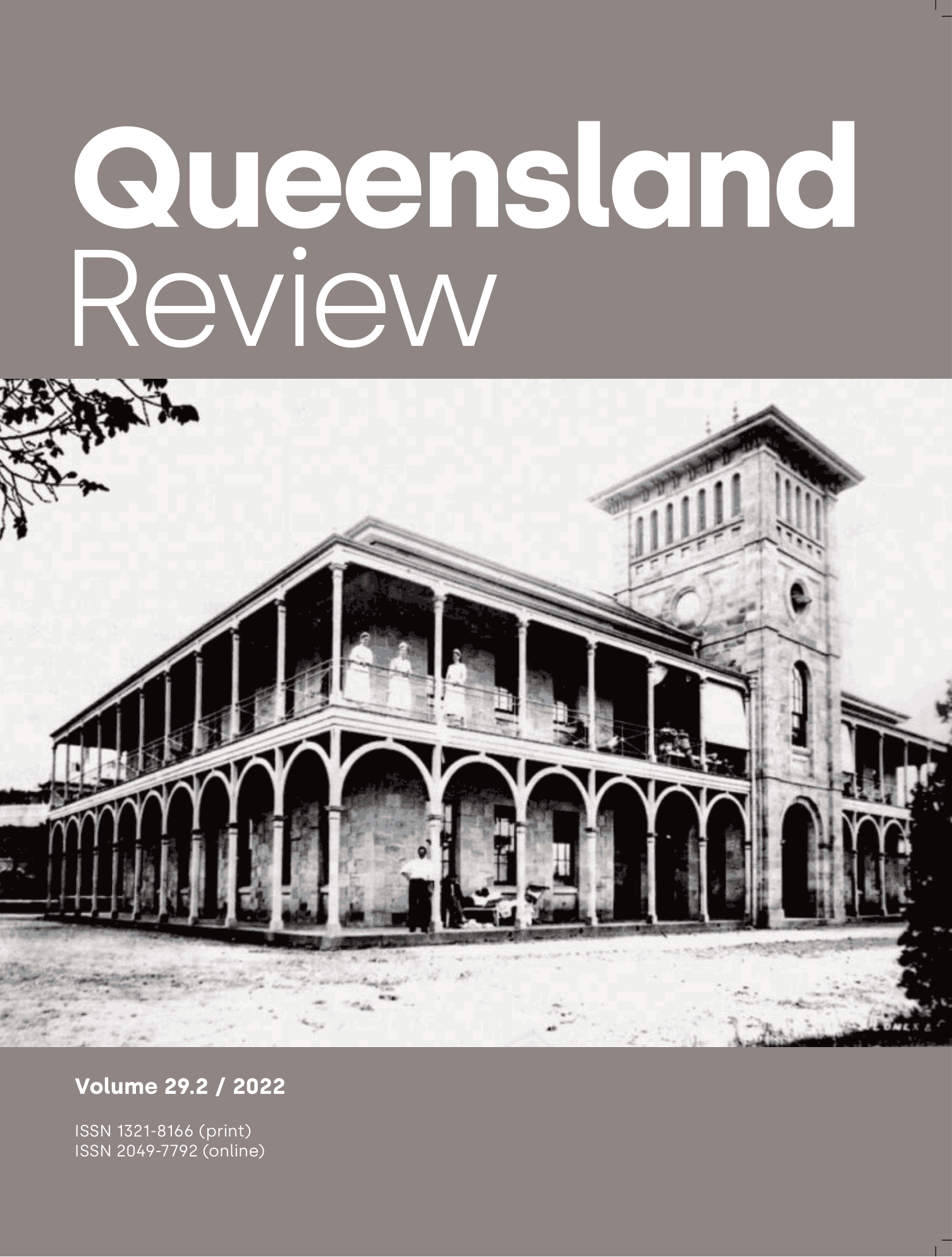The experience of syphilis in early Queensland as recorded through hospital records
DOI:
https://doi.org/10.1558/qre.23682Keywords:
hospital records, patient records, Queensland, sexually transmitted infections (STI), syphilis, treatment of diseaseAbstract
The story of colonial expansion has often been entwined with the social and health impact of syphilis. The purpose of this study was to examine the effect of syphilis (in its primary, secondary and tertiary forms) on hospital admissions and individual patients in Queensland in the pre-antibiotic era. This article centres on available hospital patient records for the years 1880–1920, stored at the Queensland State Archives. From these records, 220 cases of syphilis were retrieved, the majority diagnosed as primary-stage infections. Overall, it was found that the number of deaths from syphilis in its tertiary form was not significant compared with other causes of death in that period. The perception of colonial syphilis as highly prevalent and a serious threat to the population is not supported by our review of hospital records, which suggests that its reputation in relation to its social implications exceeded the evidence of its prevalence.
References
R. Porter, The greatest benefit to mankind: A medical history of humanity from antiquity to the present (London: HarperCollins, 1997), pp. 464–6.
B. Smithurst, ‘Historic and epidemiologic review of venereal diseases of Queensland (PhD thesis, University of Queensland, 1981), p. 19. Phillip’s return to Lord Sydney in August 1787 from Rio de Janeiro reported the number of sick listed between Teneriffe and Rio de Janiero was eighty-one, of whom seven had venereal disease.
M. J. Lewis, Thorns on the rose: The history of sexually transmitted diseases in Australia in international perspective (Canberra: AGPS, 1998), p. 65.
Lewis, Thorns on the rose.
Lewis, Thorns on the rose, p. 15.
Lewis, Thorns on the rose.
P. J. Dowling, ‘A great deal of sickness: Introduced diseases among the Aboriginal people of colonial Southeast Australia 1788–1900’ (PhD thesis, Australian National University, 1997), p. 102.
Lewis, Thorns on the rose, p. 55.
P. F. Sparling et al., ‘Clinical Manifestations of Syphilis’, in K. K. Holmes, P. F. Sparling, W. E. Stamm, P. Piot, J. N. Wasserheit, L. Corey, M. S. Cohen and D. H. Watts, Sexually transmitted diseases, 4th ed. (New York: McGraw-Hill, 1997), pp. 661–5.
R. Patrick, A history of health and medicine in Queensland 1824–1960 (Brisbane: University of Queensland Press, 1987), pp. 366–7.
Patrick, A history of health and medicine, p. 264.
Lewis, Thorns on the rose, p. 67.
M. Stewart, J. Debattista, L. Fitzgerald and O. Williams, ‘Syphilis: General Paralysis of the Insane and Queensland asylums’, Health & History 19(1) (2017), 60–79.
Stewart, Debattista, Fitzgerald and Williams, ‘Syphilis’.
Statistics of Queensland – 1894, Vital Statistics. Diseases and Deaths in all Charitable Institutions, Table No. CLVIII. Gonorrhoea infections would account for the majority of these admissions.
Statistics of Queensland – 1894.
Statistics of Queensland – 1894.
Smithurst, ‘Historic and epidemiologic review’, p. 61. This estimate does not include those patients who died of GPI in the Goodna Asylum.
Registrar-General’s Annual Reports 1880–1919, Queesland Parliamentary Papers, Votes and Proceedings.
Registrar-General’s Annual Reports 1880–1919.
Smithurst, ‘Historic and epidemiologic review’, pp. 268–9.
R. Frances, ‘The history of female prostitution in Australia’, in R. Perkins, G. Prestage, R. Sharp and F. Lovejoy, eds, Sex work and sex workers in Australia (Sydney: UNSW Press, 1994), pp. 27–52.
J. H. L. Cumpton and M. J. Lewis, eds, Health and disease in Australia: A history (Canberra: AGPS, 1989), p. 258.
Cumpton and Lewis, Health and disease.
Smithurst, ‘Historic and epidemiologic review’, p. 83.
QSA Series 10817, Item 2887, Register of Deaths and Special Removals – Brisbane. Hospital.
QSA Series 9506, Item 298292, Case Book – Brisbane Hospital.
QSA Series 9506, Item 298292.
QSA Series 9506, Item 298293, Case Book – Brisbane Hospital.
QSA Series 9506, Item 298293.
G. Briscoe, Counting, health and identity: A history of Aboriginal health and demography in Western Australia and Queensland, 1900–1940 (Canberra: Aboriginal Studies Press, 2003), p. 257. There were no records kept of ATSI deaths in the Vital Statistics for Queensland until after 1901.
Briscoe, Counting, health and identity.
QSA Series 5711, Item 881786, Admission Register – Ingham Hospital.
QSA Series 9051, Item 292637, Patient Records – Wolston Park Hospital.
A common practice regarding SSIs admitted to the asylum was to return them to their island of origin.
Patrick, A history of health and medicine, p. 31.
Patrick, A history of health and medicine, p. 429; Smithurst, ‘Historic and epidemiologic review’, p. 87.
Patrick, A history of health and medicine, p. 118.
QSA Series 10817, Item 2887, Register of Deaths and Special Removals – Brisbane Hospital.
QSA Series 9506, Item 298292, Case Book – Brisbane Hospital.
QSA Series 9506, Item 298292.
QSA Series 10817, Item 2887, Registers of Deaths and Special Removals – Brisbane Hospital.
QSA Series 11983, Item 7357, Admission Registers – Cooktown Hospital.
QSA Series 11983, Item 7357.
QSA Series 20178, Item 1988376, Patient Admission Register – Roma Hospital.
QSA Series 9608, Item 298713, 1001–2000, Admission Register, Males – Dunwich Benevolent Asylum.
QSA Series 9608, Item 298713.
QSA Series 12557, Item 9524, Register, Funerals – Dunwich Benevolent Asylum.
Deaths, Australian Institute of Health and Welfare (AIHW). Available from: https://www.aihw.gov.au/reports/life-expectancy-death/deaths-in-australia/contents/life-expectancy [1 November 2022].
Deaths, Australian Institute of Health and Welfare (AIHW).






